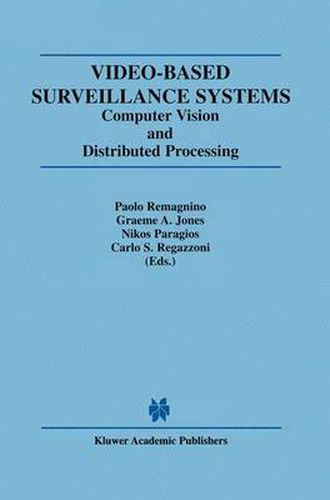Readings Newsletter
Become a Readings Member to make your shopping experience even easier.
Sign in or sign up for free!
You’re not far away from qualifying for FREE standard shipping within Australia
You’ve qualified for FREE standard shipping within Australia
The cart is loading…






This title is printed to order. This book may have been self-published. If so, we cannot guarantee the quality of the content. In the main most books will have gone through the editing process however some may not. We therefore suggest that you be aware of this before ordering this book. If in doubt check either the author or publisher’s details as we are unable to accept any returns unless they are faulty. Please contact us if you have any questions.
Visual surveillance systems have adopted technological developments in acquisition and communications. These advances have not so much changed the nature of surveillance as extended its reach and reliability. Fundamentally, systems remain relatively unintelligent with human operators remaining central to the threat assessment and response planning procedures found in CCTV installations. Nonetheless, the availability of high-performance computing platforms will ensure that cycle-hungry intellectual property gestating in academic and industrial research programmes will have a major impact on the next generation of products. This text surveys works in progress in laboratories from around the world. The first part of the book present the most recent trends in the industrial world including real-time systems for monitoring of indoor and outdoor environments, society infrastructures such as subways and motorways, retail stores and aerial surveillance. Part Two explores best practices in a chain of algorithms required to perform robust and accurate real-time tracking for motion detection involving rapid and frequent lighting changes, the establishment of accurate temporally consistent object trajectories particularly in crowded scenes, and the classification of object types. Part Three contains contributions which attempt to analyze events unfolding in a monitored scheme. The last part reviews distributed intelligent architectures which are likely to exploit three key recent technological developments in light-weight distributed computing methodologies, and intelligent sensors. Such architectures, in which signal analysis is moving towards sensing devices, can exploit the reduced bandwidth requirements of transmitting knowledge rather than pixels. This text provides information for professionals working in the areas of surveillance, image processing, computer vision, digital signal processing and telecommunications.
$9.00 standard shipping within Australia
FREE standard shipping within Australia for orders over $100.00
Express & International shipping calculated at checkout
This title is printed to order. This book may have been self-published. If so, we cannot guarantee the quality of the content. In the main most books will have gone through the editing process however some may not. We therefore suggest that you be aware of this before ordering this book. If in doubt check either the author or publisher’s details as we are unable to accept any returns unless they are faulty. Please contact us if you have any questions.
Visual surveillance systems have adopted technological developments in acquisition and communications. These advances have not so much changed the nature of surveillance as extended its reach and reliability. Fundamentally, systems remain relatively unintelligent with human operators remaining central to the threat assessment and response planning procedures found in CCTV installations. Nonetheless, the availability of high-performance computing platforms will ensure that cycle-hungry intellectual property gestating in academic and industrial research programmes will have a major impact on the next generation of products. This text surveys works in progress in laboratories from around the world. The first part of the book present the most recent trends in the industrial world including real-time systems for monitoring of indoor and outdoor environments, society infrastructures such as subways and motorways, retail stores and aerial surveillance. Part Two explores best practices in a chain of algorithms required to perform robust and accurate real-time tracking for motion detection involving rapid and frequent lighting changes, the establishment of accurate temporally consistent object trajectories particularly in crowded scenes, and the classification of object types. Part Three contains contributions which attempt to analyze events unfolding in a monitored scheme. The last part reviews distributed intelligent architectures which are likely to exploit three key recent technological developments in light-weight distributed computing methodologies, and intelligent sensors. Such architectures, in which signal analysis is moving towards sensing devices, can exploit the reduced bandwidth requirements of transmitting knowledge rather than pixels. This text provides information for professionals working in the areas of surveillance, image processing, computer vision, digital signal processing and telecommunications.